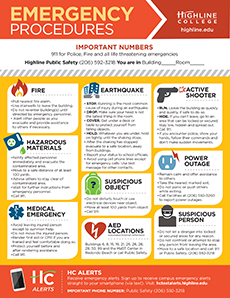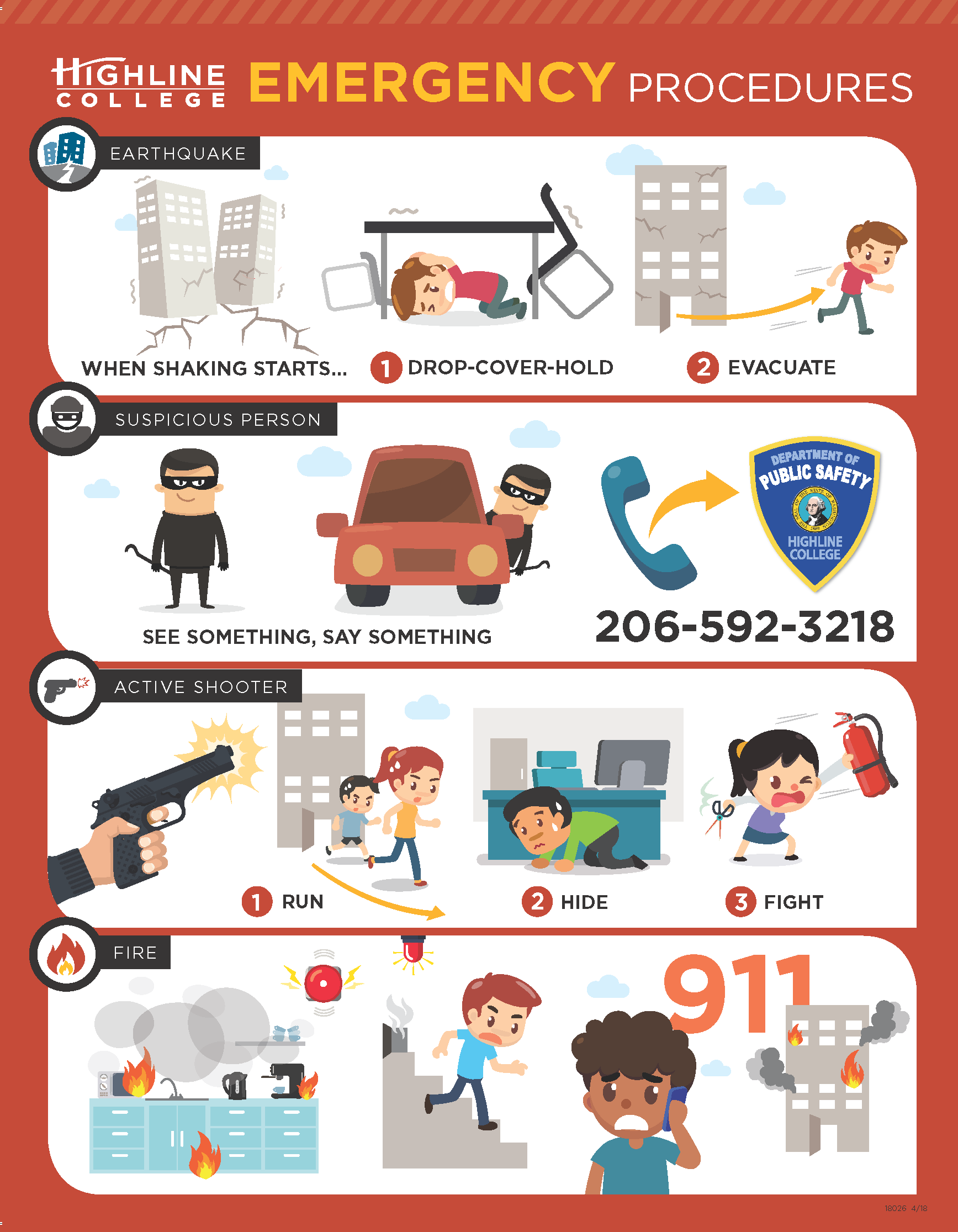Emergency Procedures
Emergencies Can Occur at Any Time
Highline has established procedures for you to follow during an emergency to protect your personal safety and minimize the negative effects on campus. Preparing for emergencies, even the most basic, will help you respond quicker and more effectively should the need ever arise.
HC Alerts
All actively enrolled students will automatically be signed up for HC Text Alerts. Find out more information at highlinealerts.highline.edu.
Click any of the buttons below to navigate to our tips for each type of incident:
Emergency Procedures Posters
See below for two different posters showing Emergency Procedures, click the PDF icon below each poster to download
Emergency Procedures
Emergency Procedures (Pictograph)
Earthquake
- STOP. Running is the most common cause of injury during an earthquake.
- DROP. Make sure your head is not the tallest thing in the room.
- COVER. Get under a desk or table to protect yourself from falling objects.
- HOLD. Whatever you are under, hold on tightly until the shaking stops.
- After the shaking has stopped evacuate to a safe location, away from buildings.
- Report your status to school officials.
- Avoid using cell phone lines except for emergency calls. Use text message for other contacts.
![]()
Active Shooter
- RUN. Leave the building as quickly and quietly, if safe to do so.
- HIDE. If you can’t leave, go to an area that can be locked or secured. Stay low, hidden and spread out.
- Call 911.
- If you encounter police, show your hands, follow their commands and don’t make sudden movements.
Concern, Assistance, Resources, and Empowerment (CARE) Team
The goal of the CARE Team is to take an informed, proactive and preventive approach to addressing potentially threatening behaviors.
AED Locations
Automated External Defibrillator
- Buildings 6, 30, 26 (Fitness Center), Public Safety Patrol Vehicle and the MaST Center in Redondo Beach or call Public Safety.




